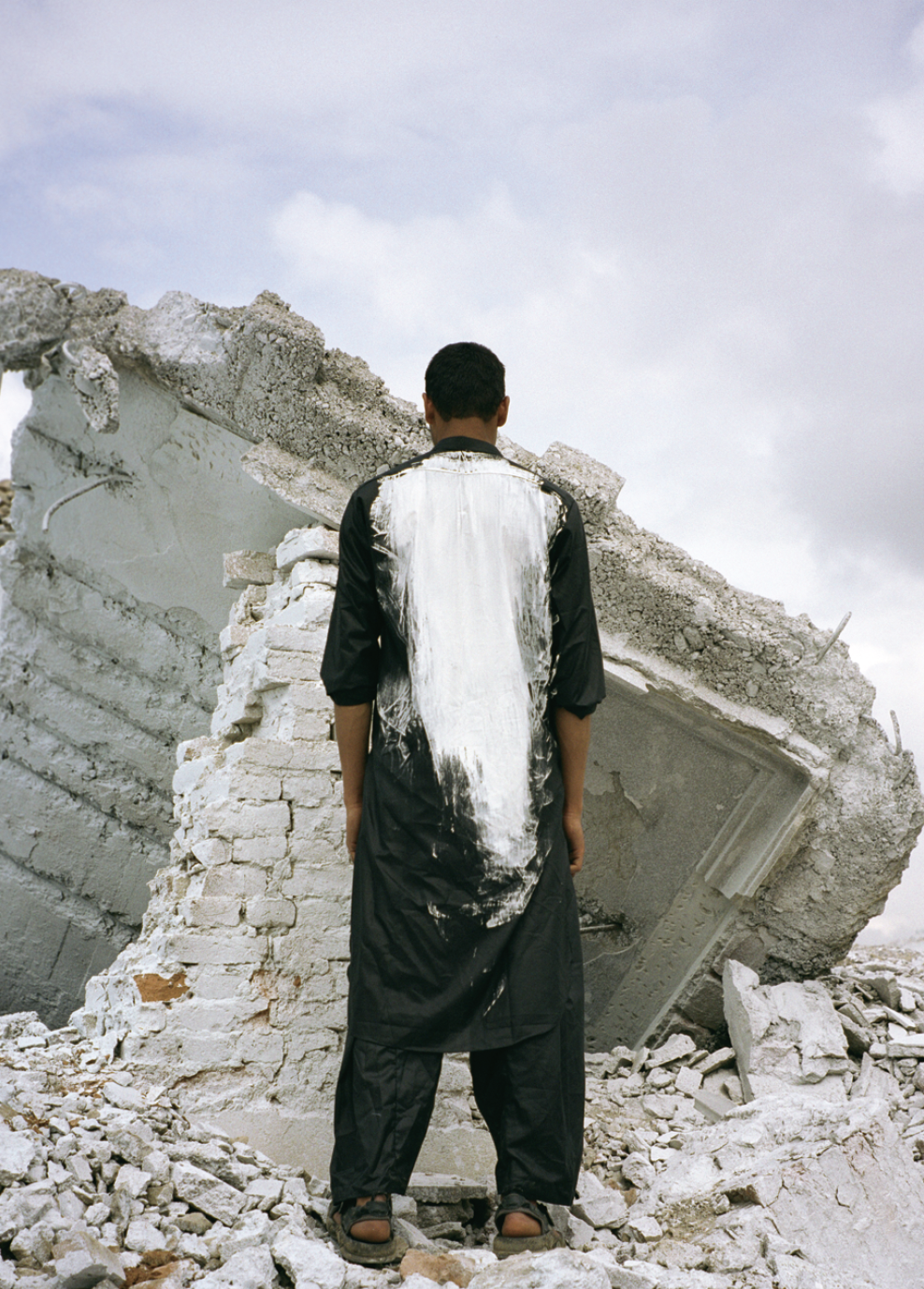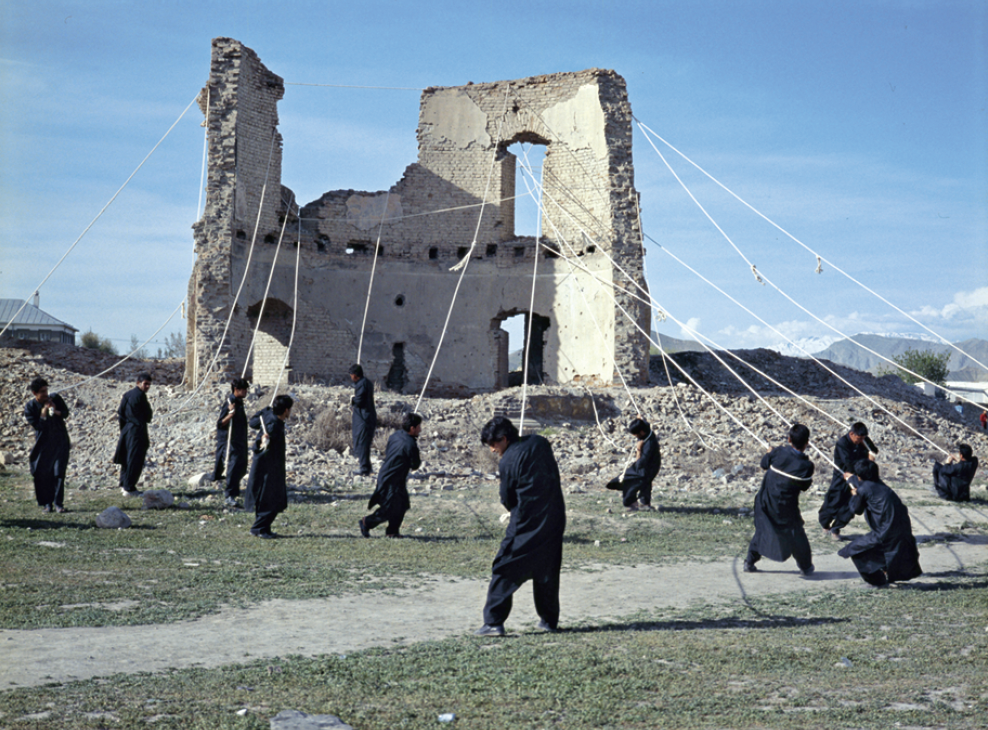Lida Abdul
Afghanistan’s history is a storied one. Alongside civil war and sectarian infi ghting, the landlocked country’s strategic location has left it subject to colonial and imperial assaults, from the Scythians and Mongols up to the Anglo-Afghan wars, the Soviet invasion in 1979 and the Bush administration’s “War on Terror.” Like Iraq and Iran, Afghanistan is presented in the West as part of a narrative refracted through ideology, specifically a neo-conservative one spun into a clash of civilizations, where the population is rendered mute.
Lida Abdul locates her work within this zone. She fled Afghanistan with her family during the Soviet occupation, and lived as a refugee in India, Germany and the United States, while earning a degree in political science along with her MFA, and eventually going on to represent Afghanistan in its debut at the Venice Biennale in 2005. A survey of her work appeared recently in Vancouver at two venues. Starting at The Western Front, five television screens presented an archive of her earlier works. Abdul has acknowledged the influence of performance artists like Ana Mendieta and Marina Abramovic, and the sober and earnest style of both are apparent, as she speaks through gesture and object about identity and displacement in a variety of scenarios. She drags a dollhouse through a city’s streets, a line of books nailed to a wall is hosed down, Magnetic Poetry tiles spill from her mouth, or, unambiguously, a bucketful of toy soldiers and warcraft rains down on her from above. These pieces act as a prelude for her later work; elsewhere in the gallery, a large projection of Afghan horsemen attempting to pull down a building’s last remaining wall are a preface to what can be found at Centre A.

Lida Abdul, White House, 2005, production still. Image courtesy the artist and Giorgio Persano Gallery.
Centre A’s high-ceilinged space befi ts the monumental character of her later work. Returning home after the fall of the Taliban, Abdul created a series of cinematic tableaux dealing with the relationships of place, memory and architecture, and detailing a space where, in her words, children grow up in ruins among adults coping with history. Alongside production stills, a trio of projections presents cinematic, performative and ritualistic negotiations between place, the present and history. In one, a group of men gathers and claps stones at the foot of the alcoves where the monumental Banyen Buddhas— dynamited by the Taliban on the grounds of idolatry—once stood. In another, a queue of boys stands out against a sandstorm, waiting to sell intact bricks gathered from remains, and, in the pointedly titled White House, Abdul, bucket and brush in hand, whitewashes the ruins of a building. Each piece points to the current state of Afghanistan, fostering a vision that goes beyond current political turf wars. This is best exemplified in 2006’s What We Saw Upon Awakening. Monumental in scope— roughly the size of a standard cinema screen—a group of black-robed men tether themselves to the same bombed-out wall and strain, like the horsemen in a combined Sisyphean and Herculean effort, to pull it down.
In all these scenarios, the built environment plays a significant role. We see not only the displacement of culture and identity through wilful destruction, but confrontation of the agendas that have wreaked such havoc in the first place. Art historian and curator Els van der Plas put it well: “There is no such thing as total destruction.” Rubble, stones and particles act as evidence, and, more importantly, bear witness. Visually, her pieces merge the political, personal and poetic: like the best of cinema and literature, her images embed themselves as things of beauty, recalling the Byzantinian tableaux of Armenian director Sergei Paradjanov or one of Italo Calvino’s Invisible Cities made visible, while a blink reveals a nation’s attempt to rebuild as part of a larger continuum in a territory largely defined by conflict.

Lida Abdul, What We Saw Upon Awakening, 2006, production still.
Given the epic scale in presentation, technically, her works are refreshingly rough around the edges, eschewing the CinemaScope/5.1 surround sound production values and slick bombast of the larger spectacles that seem to characterize a lot of video work today. Matthew Barney it isn’t, and thankfully so—her work is five times more interesting. While echoing cinema’s conventions, there is an immediacy at work in these vignettes in terms of real-time events and the politics of representation. Abdul and Said Ismael Noori, curator for the 2005 Venice Biennale, have both remarked on Afghanistan as a subject: not simply subject to invasion and war, but as the subject of documentaries and news media. The question of its representation and who has the authority to picture the region—generally by the West as “other”/“enemy”/“terrorists” and occasionally “victim”—is brought to bear. Information and advocacy all help to broaden the nation’s image, but Abdul’s work, especially by way of its entry into the art and, by extension (theoretically, at least), the larger world, serves to voice Afghanistan’s own story outside the West’s political/financial engagement with the country.
This is important. As I sat with the works, I noted how my reception can’t not be coloured by a loaded and mediated sense of place. For example, at the end of What We Saw Upon Awakening, the men solemnly bury a stone; beyond the ritual of rebirth and reconstruction, intrusive media images of improvised funeral rites in war zones, or of land mines and Improvised Explosive Devices, would pop in and out of my head. The latter associations were probably not part of Abdul’s intent but still set off alarm bells in terms of the residue of Afghanistan’s symbolic status in North American culture, and in Canada’s in particular. Given our military involvement in the region alongside a handful of other nations stuck with cleaning up a mess that “Operation Enduring Freedom” left behind, Abdul’s work is a reminder that there are multiple Afghanistans outside of casualty reports on CBC news, General Rick Hillier’s dispatches from the front or stories about Tim Hortons on army bases in the Globe and Mail. Abdul shows us her home and nation and people who, despite the conflict surrounding them, and despite simplistic views from the cheap seats of a war zone, are not soundbites or caricatures or a theoretical “Other.” She reflects people who seem interested in simply getting on with it. ■
“Lida Abdul” was exhibited at both The Western Front and Centre A in Vancouver from January 23 to March 1, 2008.
Christopher Olson is a student in Vancouver and frequent contributor to Border Crossings, Vancouver Review and Front magazines.

